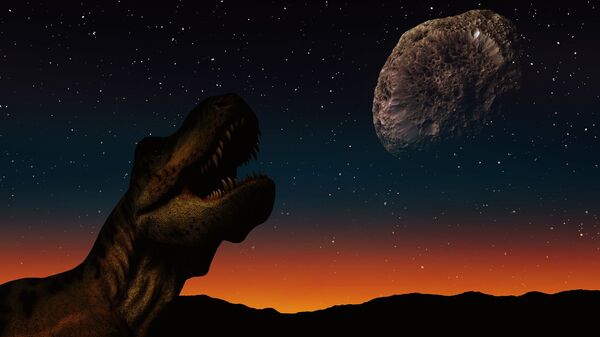It is a sad day for the US space programme and Elon Musk, as it turns out that dinosaurs may have been the first lifeforms to visit the Moon and Mars, albeit dead and flat as a pancake. According to the eccentric hypothesis proposed by science journalist Peter Brannen, the remains of dinosaurs may have travelled to other planets in the Solar System following the Cretaceous-Paleogene extinction event that occurred around 66 million years ago and wiped out 80 percent of life on Earth.
"A rock larger than Mount Everest hit planet Earth travelling twenty times faster than a bullet. This is so fast that it would have traversed the distance from the cruising altitude of a 747 to the ground in 0.3 seconds. The asteroid itself was so so large that, even at the moment of impact, the top of it might have still towered more than a mile above the cruising altitude of a 747. In its nearly instantaneous descent, it compressed the air below it so violently that it briefly became hotter than the surface of the sun", Brannen writes in his book.
What happened next sounds like a sketch from Monty Python. Essentially, the journalist suggests that the collision resulted in dinosaurs being catapulted into space. Brannen writes that the asteroid punched a hole of outer space vacuum, and enormous volumes of earth (together with what was left of the dinosaurs) were expelled into orbit and beyond.
As crazy as it may sound, this is not the first time that such an extravagant hypothesis has been proposed. In 2013, scientists from Penn State University in the United States conducted a study which assumed that as a result of the asteroid collision, traces of life were sent into space.
"We find that rock capable of carrying life has likely transferred from both Earth and Mars to all of the terrestrial planets in the solar system and Jupiter. Any missions to search for life on Titan or the moons of Jupiter will have to consider whether biological material is of independent origin, or another branch in Earth's family tree", said Rachel Worth, lead author of the study.

